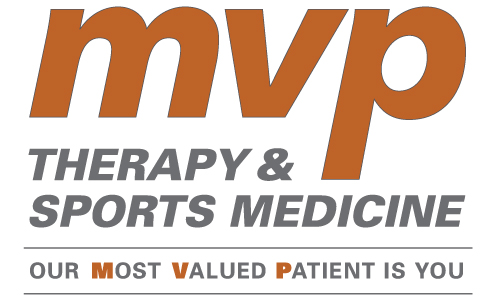Learn more about what the MVP Experience is like
WHAT SHOULD I BRING TO MY FIRST APPOINTMENT? +
• Complete your new patient forms and bring with you
• Driver's License or other photo ID
• Insurance card (s)
• Physician Order
• Direct Access patients can be seen for 30 days without an order from a physician
• If workers compensation patient, we will need a copy of the approval letter and claim information/ contact info
• Most importantly, bring a lot of questions! The more you understand your treatment, the better your outcome will be
How should I dress? +
In loose-fitting clothing that will let the therapist see the area(s) we’ll be evaluating and treating. If you have a knee problem, for example, wear shorts; for a shoulder problem, a tank top; or for low back problems, a loose-fitting shirt and pants.
What happens during my first visit? +
A lot. That’s why your initial evaluation can be up to 60 minutes long. But it will lead to a treatment plan designed especially for you. First, we’ll go through your paperwork (see above) to familiarize ourselves with your needs, your goals and your current condition.
Then, one of our licensed physical therapists will conduct an initial evaluation, discussing:
- Your medical history
- Your current problems and complaints
- How intense your pain is, and what aggravates or eases it.
- How this affects or restricts your daily activities
- Your personal physical therapy goals
- Medications and tests you’ve taken and procedures you’ve undergone
Having determined the overall outline of your problem, the therapist will then perform some hands-on tests to more specificality define it:
Palpation – Touching around the area where your pain or problem is, to check for tenderness, swelling, inflammation, soft tissue integrity, tissue temperature, etc.
Range of Motion – Moving your joint(s) to check the quality of movement and look for restrictions
Muscle Testing – Checking for strength and quality of muscle contractions for pain, weakness and possible neurological concerns
Neurological Screening – The therapist may also check your reflexes and your muscles’ sensing touch, pain, vibration or temperature to see how your nerves are communicating with your muscles.
Special Tests – To confirm or rule out the presence of additional problems
Posture Assessment – Assessing the positions of your joints relative to ideal positions Based on your input and the test observations, the therapist will compile a list of your problems and how to treat them – including how many times a week and for how many weeks you’ll need therapy, your short-term and long-term goals, home programs, and what to expect when you’re discharged from therapy.
Which treatments do you perform? +
Because each patient is different – each with different injuries, different needs and different goals – we perform a wide range of different therapy techniques. Manual Therapy– Kneading, stretching and manipulating your muscles can restore mobility in joints, skeletal muscles and connective tissues, while massage can improve the return flow of blood to your heart through your veins.
Exercise –We’ll custom-design a series of stretches and exercises specifically designed to strengthen muscles that have been weakened by, for example, recovery from an injury or surgery. The right exercises can not only relieve your pain, but also prevent you from having opain in the future.
Ice – Both during and after treatment, ice’s ability to constrict blood vessels makes it an incredibly effective anti-inflammatory. By making your joint less swollen, ice makes it more mobile.
Heat – Making you feel better is only one good thing that moist heat does. By loosening up your tissues, it also makes other modalities and treatments, such as stretching, more effective.
Ultrasound – High-frequency sound waves can concentrate heat into specific muscles, ligaments and tendons deep in your body, where superficial heat can’t penetrate. This decreases pain and increases mobility.
Traction – Gently separating your vertebrae relieves pain by reducing compression on your spinal discs ,creating more space for your nerves. In addition to our therapists performing traction manually, MVP Therapy has a cervical traction device in house.
Electrical Stimulation – Electrically stimulating your muscles helps restore muscle function and relieves pain.
How many visits will I need? +
Depending on the nature and severity of your condition, you may need anywhere from just one or two visits to months of care. We reevaluate you monthly and send your doctor ongoing reports of your progress.
How long will each treatment session be? +
Typically, between 30 and 60 minutes.
__

